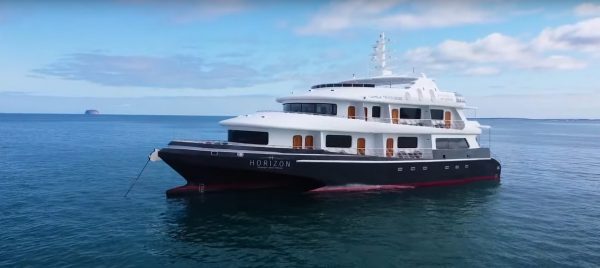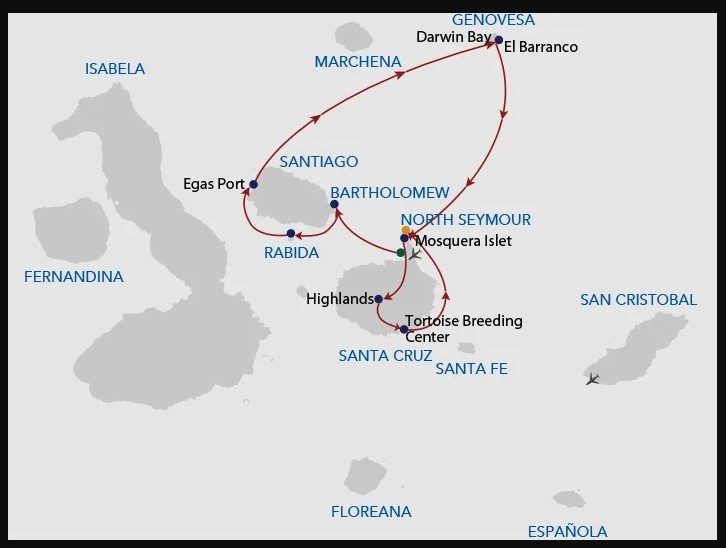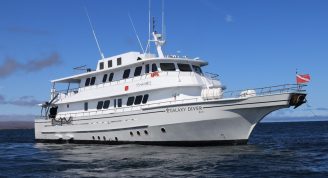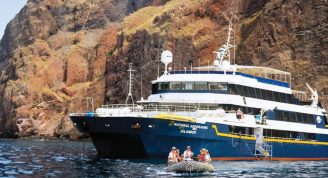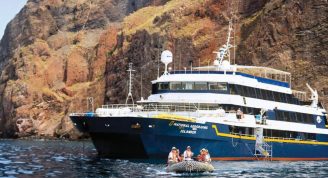Description
When is the best time to visit Galapagos? Galapagos is a place that can be visited at any time. There are two season, and the warmest is between December and May. It is the time of year when the sky is always clear, and the sun shines strongly. If you love to dive in amazing places, the best time to visit Galapagos is from June to November. During this season the weather is a little cooler, but it gives you the chance to enjoy the best from Galapagos’ famous marine reserve. Good weather for visiting all year round. Galapagos is on the Equator, but the weather is not tropical. Temperatures range from 69°-84°F / 21°-30°C Very little rainfall. Warm season Dec-May. Dry season Jun-Nov.
Trip Name
Galapagos Horizon 5 Day Cruise A
Days
5
Overview
Vessel Type: Trimaran
Length: 125 ft (38 m)
Passenger Capacity: 16
Launched: 2018
Horizon provides a top-notch experience with one of the smoothest rides in Galapagos.
Horizon is outfitted with 8 elegant and ample cabins, each with their own private balcony. Her amenities include a modern lounge, bar, al fresco dining area, and an extensive solarium with jacuzzi, designed to catch the best sights that the islands can offer, surrounded by endless charm.


